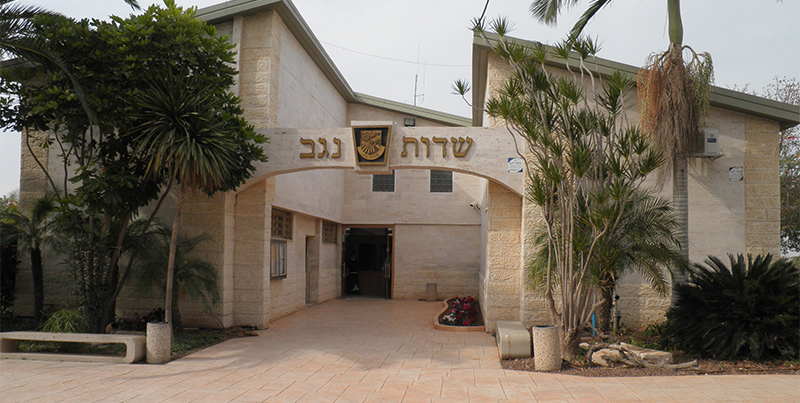
Case Study Sdot Hanegev: Insights from a Comprehensive Survey
In a recent survey conducted by the Negev Fields Council in collaboration with the Hebrew University, crucial insights have emerged regarding the priorities of the Sdot Hanegev community. The findings shed light on the mental well-being of children and youth as the foremost concern, alongside a collective call for enhanced security measures.
The survey, led by Prof. (Emeritus) Rami Benbenishty, Prof. Ruth Pat-Horenczyk, Prof. Miriam Schiff and Dr. Ohad Gelber from Hebrew University, with special assistance from Mr. Eli Klingberger and in collaboration with Ms. Hila Barzilai, Ms. Irit Segal, Dr. Liraz Cohen-Biton from the Negev Fields Council, engaged 1128 respondents from the council’s residents. Of these, 66% were women, 27% were men, and 7% chose not to specify their gender. Notably, 84% of the respondents have children in the education system.
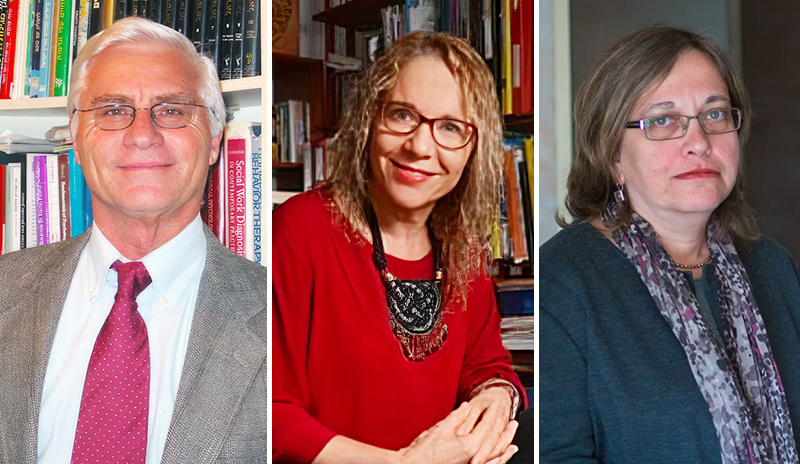
The research underscores the significance of providing residents with a platform to voice their opinions and influence decisions pertaining to the return to their homes, educational priorities, and personal security. Prof. Benbenishty emphasizes the need to continue this inclusive process in the coming months, extending it to other communities in the south and north to stay attuned to the challenges faced during times of conflict.
Key Findings:
Returning home after being evacuated:
The survey identifies the “government announcement to destroy the Hamas” and “additional budgets for the community” as significant factors influencing residents’ decisions to return to their homes.
Educational Priorities, Child and Youth Care:
Mental health emerged as the top priority for schools, as well as enhancing social ties among youth, reflecting the community’s concern for their well-being.
Personal Security:
A majority of respondents expressed skepticism about the adequacy of pre-war security levels post-conflict. The consensus is that improvements are crucial in all security areas, with particular emphasis on the allocation of weapons to local emergency units and bolstering camera surveillance.
Prof. Benbenishty stresses the importance of ongoing dialogue to empower residents and address the unique challenges faced by the community in times of war. These findings serve as a foundation for continued collaboration and action in ensuring the well-being and security of the Sdot Hanegev community.
The researchers emphasize the importance of listening to the voices of the community and incorporate the collective voice to decision making and policy formulation. As the circumstances change over time, it is important to keep a finger on the pulse and see what are the current needs and attitudes of the residents of these devastated communities. The researchers point out that although most residents express multiple needs and difficult life circumstances, the majority are willing to volunteer to help others and more than a fifth already volunteer to help others.
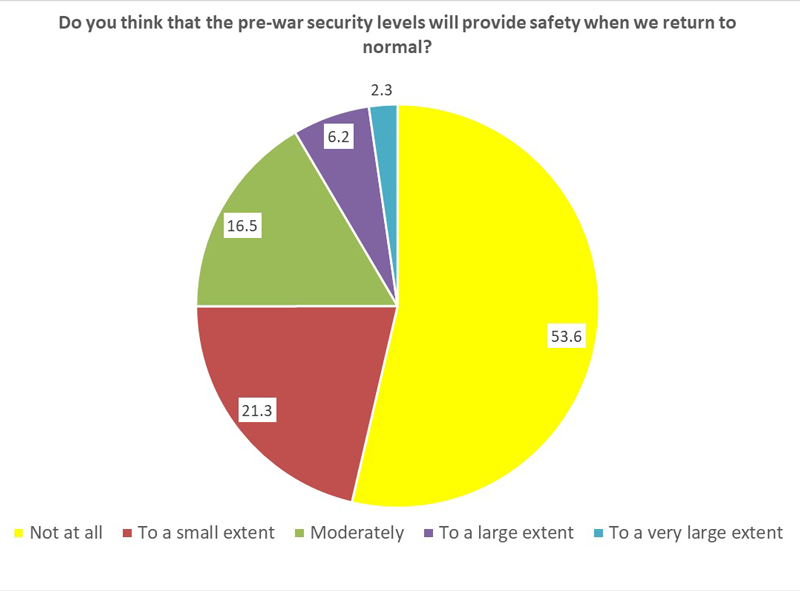
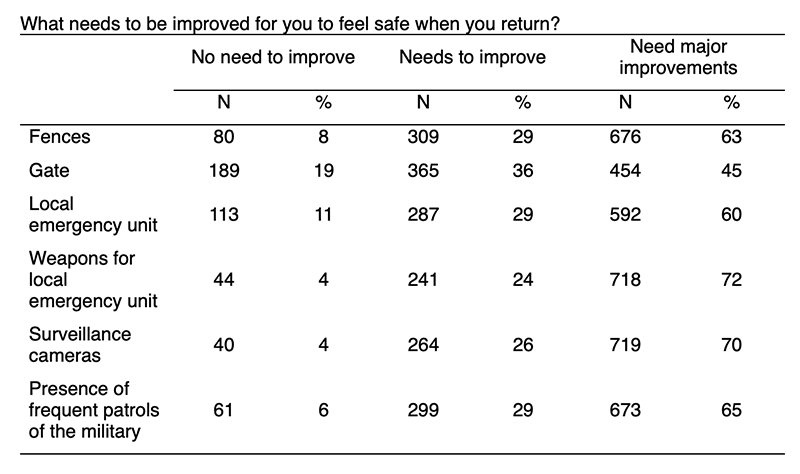
The primary factors influencing residents’ decisions to return to their homes are highlighted in survey responses. A significant majority of residents (62%) cited the ‘Government announcement on the eradication of Hamas’ as a key factor, while 50.2% identified ‘Additional budgets for the community’ as another crucial consideration. In contrast, fewer residents mentioned changes in the local leadership and the overall appearance of their place? settlement as factors influencing their decision to return.
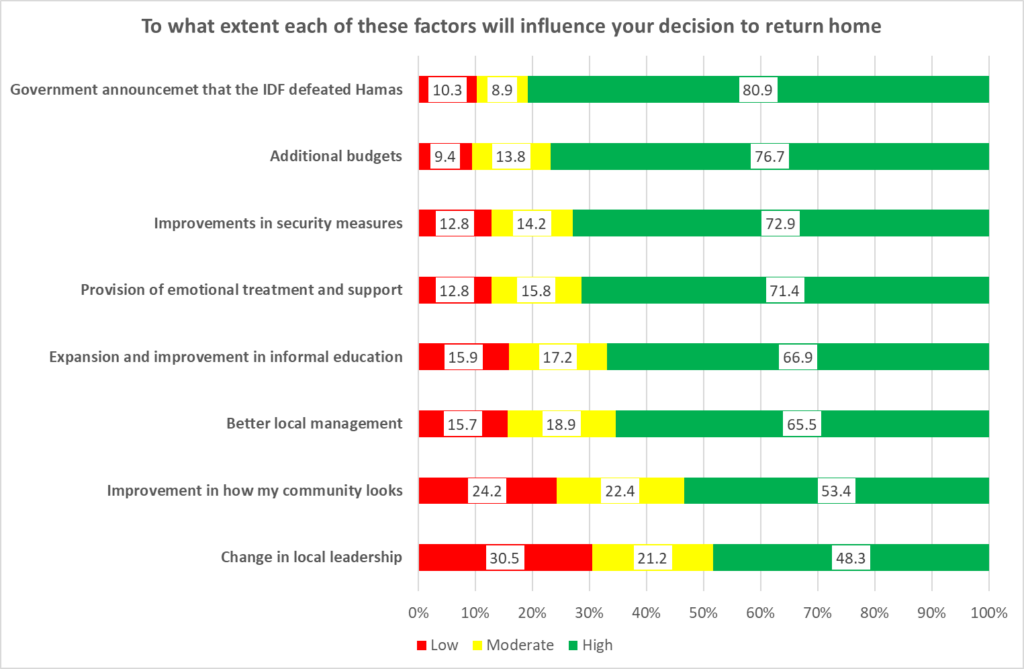
Regarding the significance of employment in the decision to return to their homessettlements, 57% of respondents indicated that employment is not a decisive factor for them. Among those who consider employment as an influencing factor, a substantial majority (38%) believe they should return as soon as possible, while a small minority (5%) prefer not to return immediately.
In assessing the various needs and priorities upon the return of children to educational frameworks, respondents with children were asked to prioritize these elements. The results reveal that parents primarily prioritize the educational environment’s impact on their children, emphasizing emotional and social aspects they wish the school to address. In contrast, the need to emphasize academic achievements is perceived at a considerably lower level of importance.
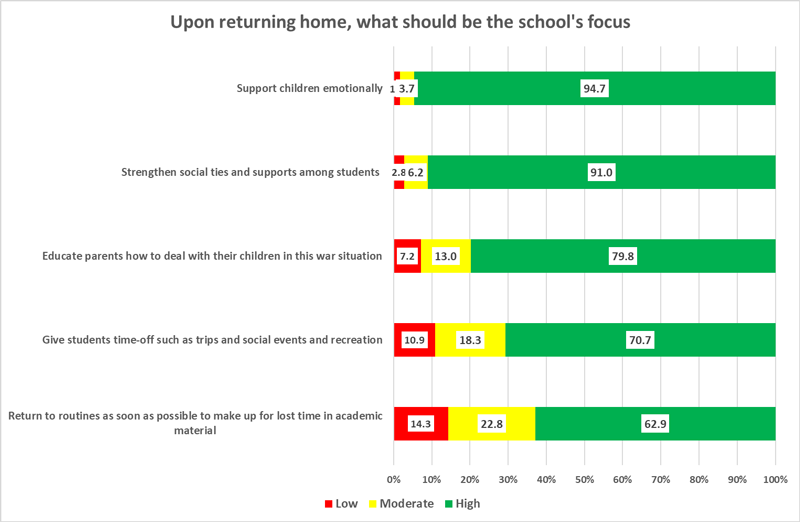
Methodology
The survey was initiated in a dialog between the Sdot Negev resilience unit and Professor (Emeritus) Rami Benbenishty from the Hebrew University and Mr. Eli Klingberger. It was conducted via the internet using links distributed by the local leadership between December 14-29, 2023. A total of 1128 participants took part in the online survey, with 745 (66%) of them being women. Additionally, 84% of the respondents have children in the education system, with half of them having at least three children in the system. While most questions were closed-ended, participants were also given the option to provide free-text responses, leading to a separate report specifically addressing those inputs. The current report is based on the analysis of 1128 questionnaires, some of which contained only partial answers.
Researchers:
Negev Fields Council – Hadar Shuman, Tair Alush & Noah Almasi
Hebrew University of Jerusalem – Prof. Rami Benbenishty, Prof. Ruth Pat – Horenczyk, Prof. Miriam Schiff, Dr. Ohad Gelber
Special thanks to Mr. Eli Klingberger for his wonderful technical support.